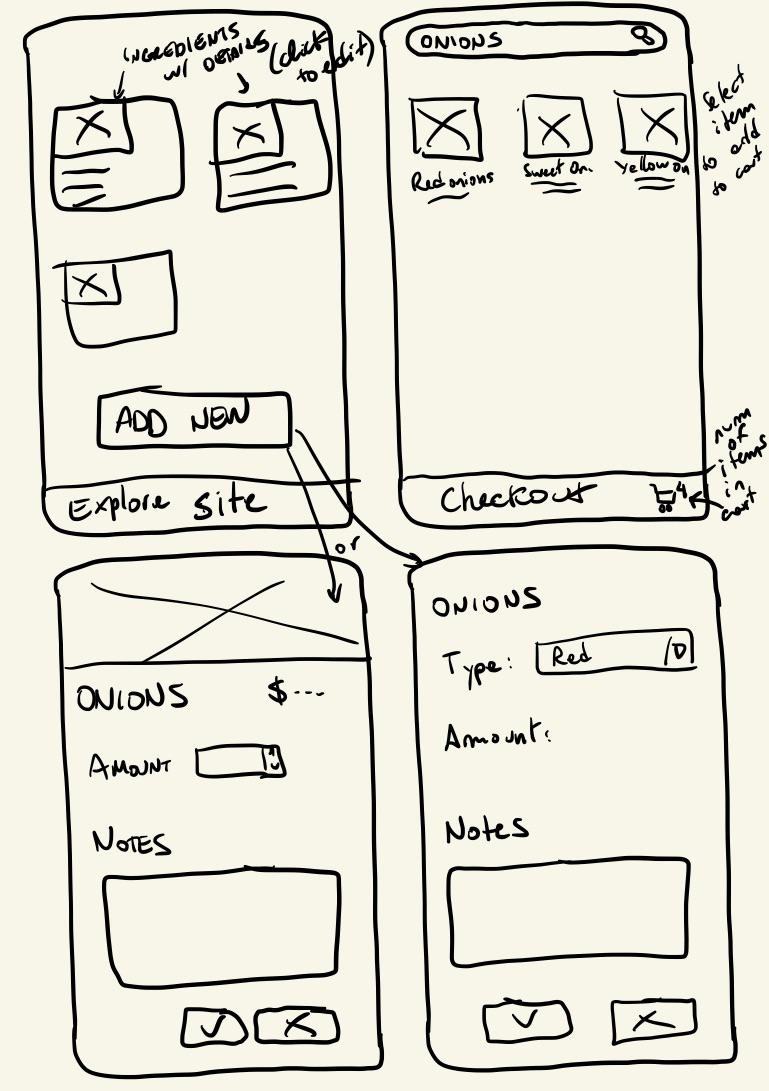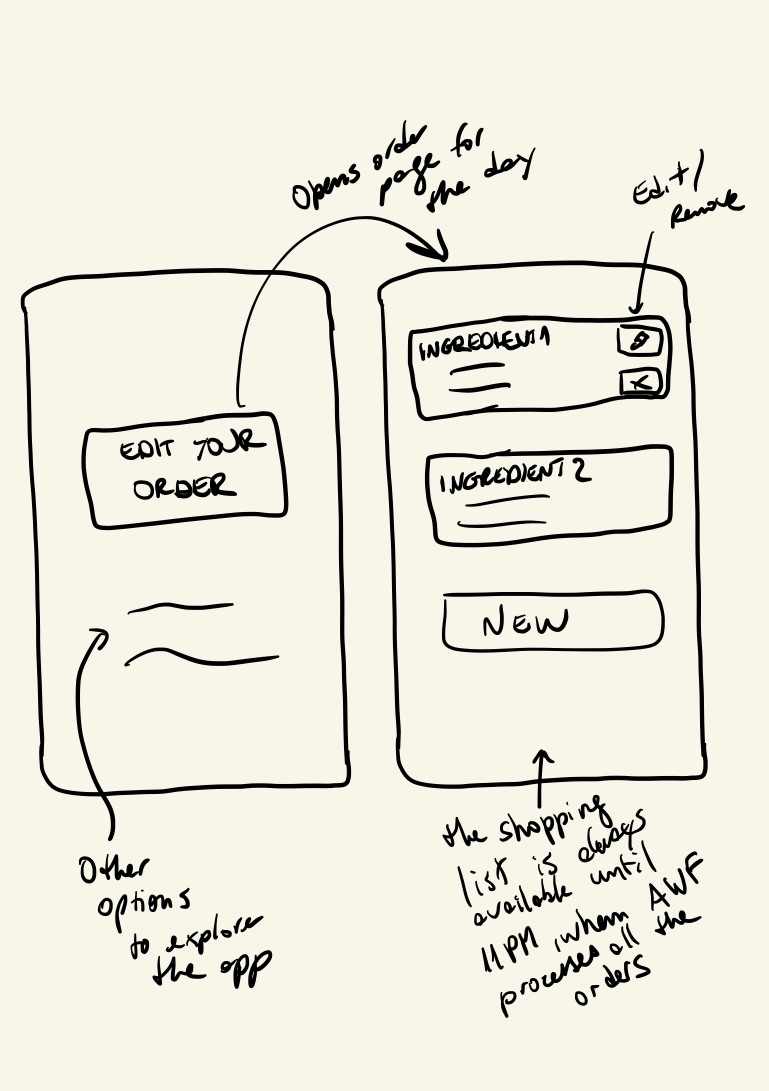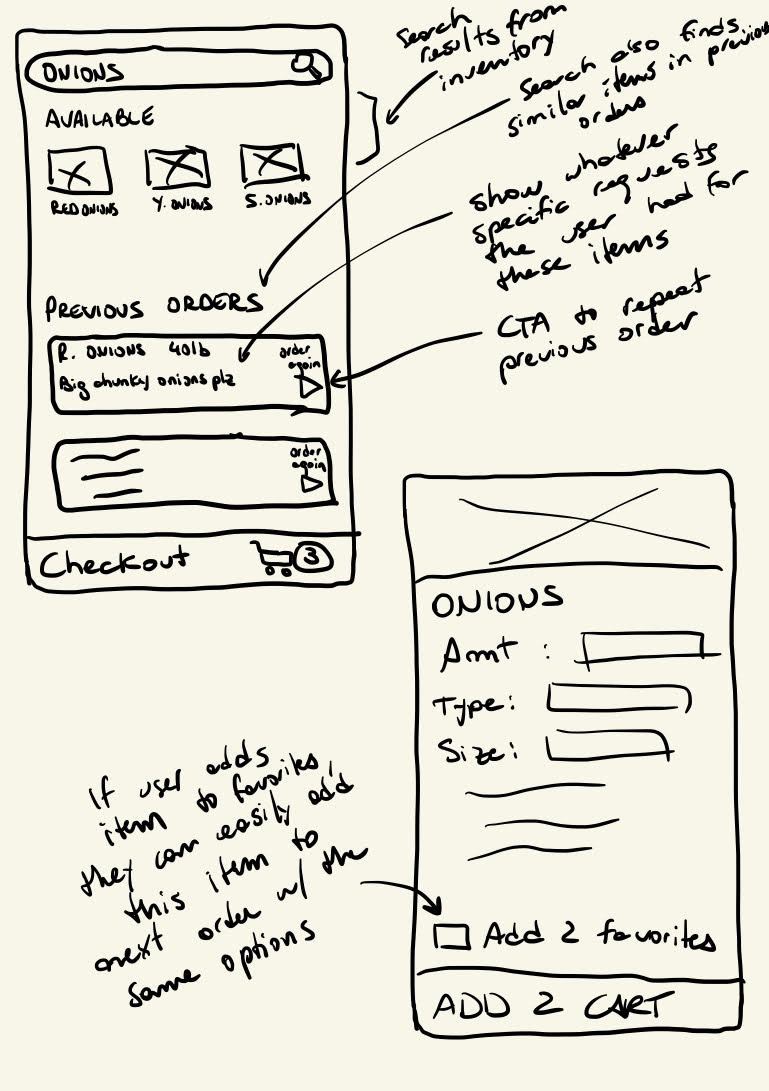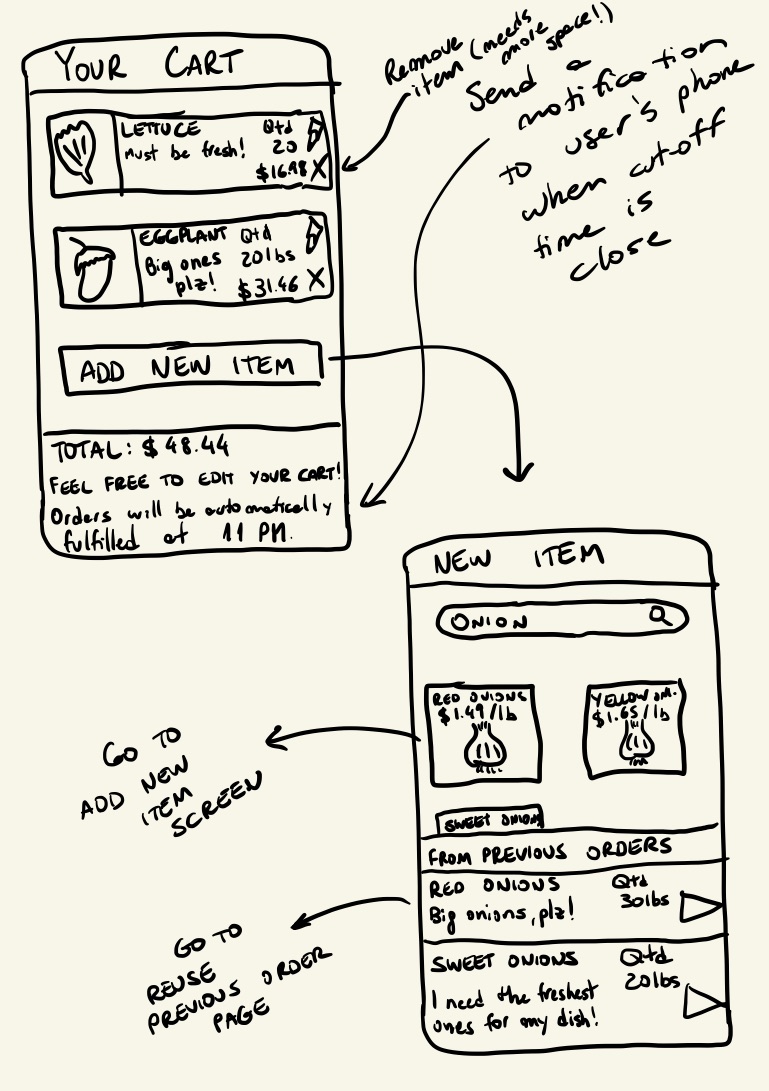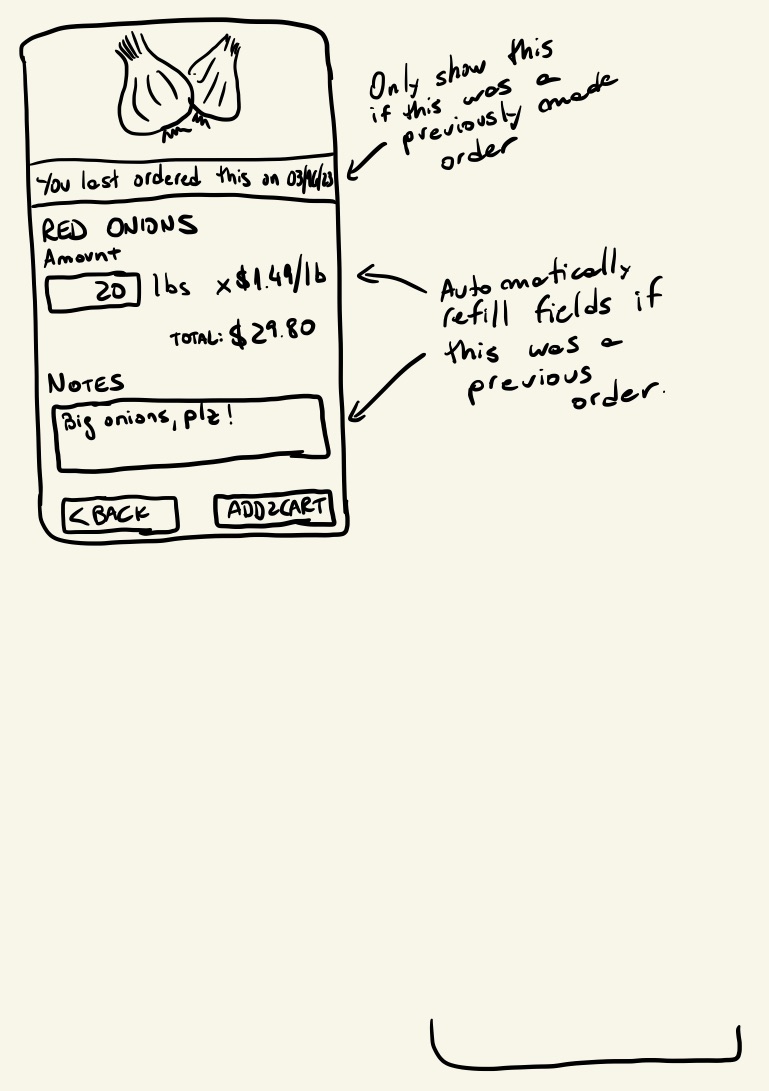Amber Waves Farm
About

Amber Waves Farm (AWF) is a working farm, market, and restaurant in Amagansett New York. The company grows vegetables and sells them to local restaurants in New York.
Chefs can use AWF's website to fresh purchase ingredients and have them delivered the next day. However, these chefs weren't using the website as much and preferred contacting the farm through text messages and e-mails, overworking the staff, giving them less time to think of ways to make the business grow.
- Business research
- User research
- UX design
- Mockup design (Figma)
- Understand the current website's issues from the perspective of stakeholders and users
- Improve the overal experience from chefs buying ingredients from the website
- Boost the site adoption from AWF customers that purchase ingredients using other means
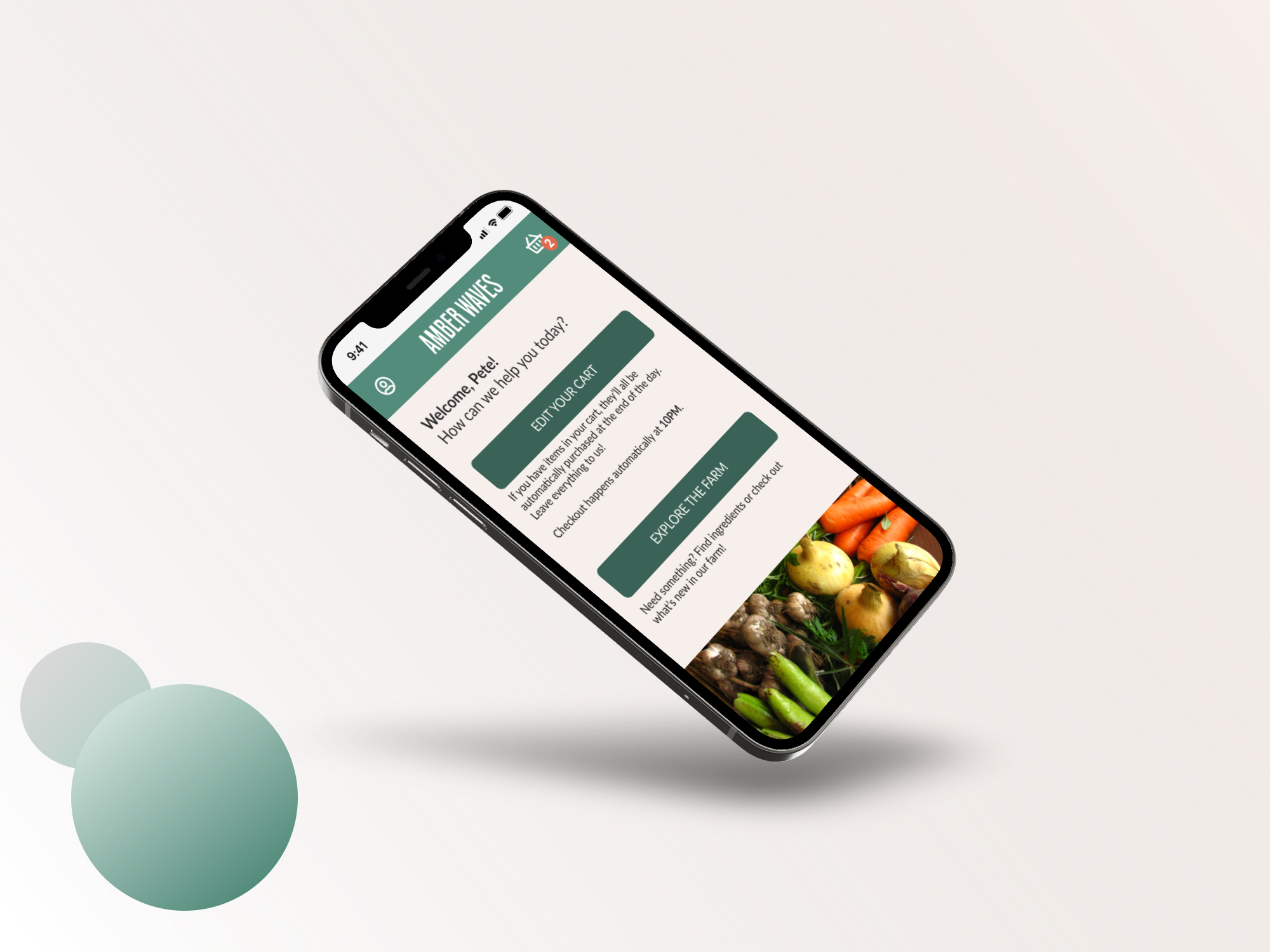
Stakeholder interview
Success looks like
- A single place consolidating all orders and harvesting information
- Chefs are happy using the website
- Chefs are sure they'll get the ingredients exactly as they asked
Constraints/requirements
- The backend part of the website must not be changed. AWF is happy with the way things are
- Customers' orders must be communicated clearly and concisely manner to AWF's employees to avoid mistakes during the processing (harvesting, packing, delivery)
Current solutions and challenges
- Chefs ignore the website and send texts and e-mails to the wholesale manager
- Chefs like to make specific requests for their ingredients
- Chefs can send messages at any time of day. Some of them request ingredients late at night
- An Excel sheet compiles all the information gathered from the website, texts, and e-mails
Resulting business improvements
- Reducing the frustration of the wholesale manager
- Improved efficiency and accuracy for decisions related to harvesting and delivery
- Extra time to research ways to grow business. The current solution limits their growth
Additional findings
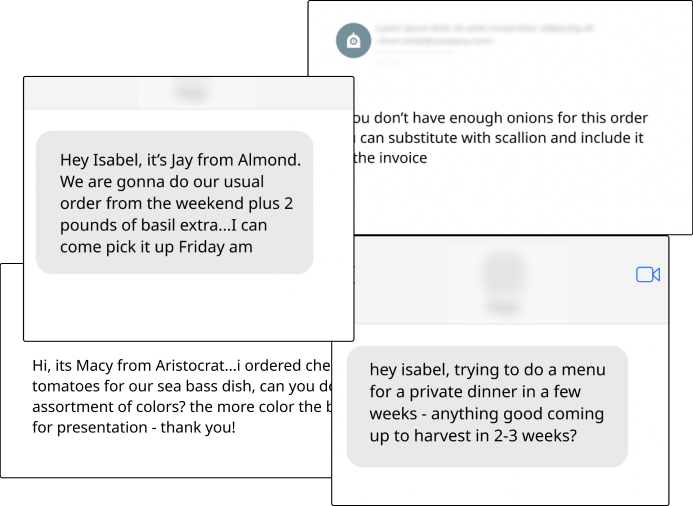
One of the biggest challenges for AWF is that orders and requests are sent through texts, emails, and other alternate channels. This makes processing orders difficult and scattered.
We reviewed some text and email correspondence from our client to understand some of the requests being made by chefs and customers.
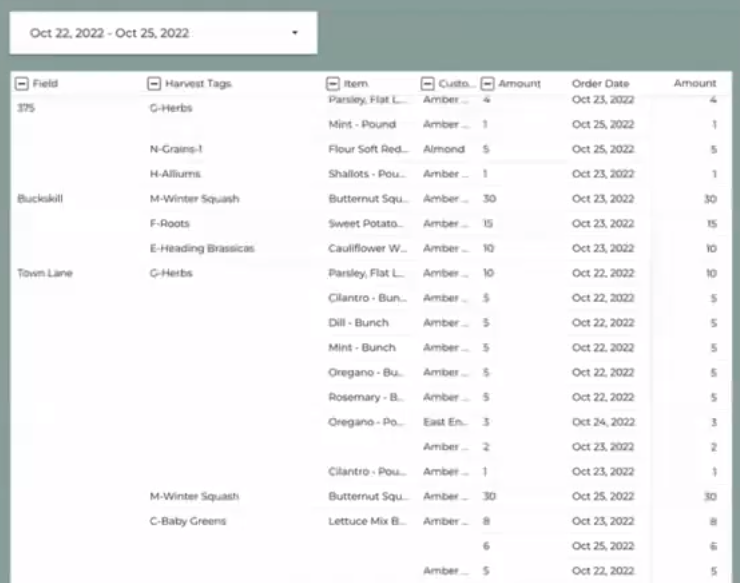
We also had access to a sample of the spreadsheet AWF wholesale manager uses to organize all order information. This information needs to be simple and accurate to ensure the harvesting of the ingredients takes place without any mistakes.
Customer interview / Persona
The persona was created from data obtained during user interviews.
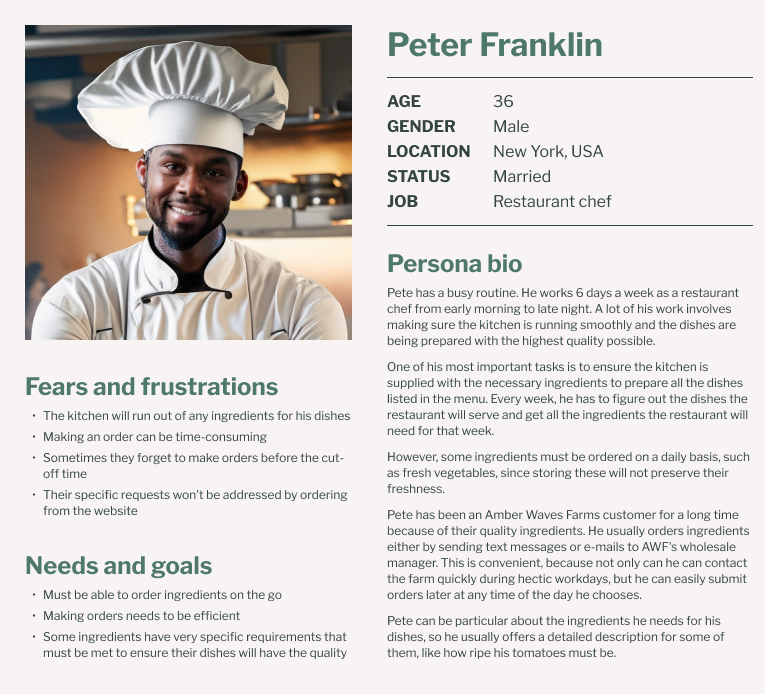
Workflow

Lo-fi sketches
Final UI for testing
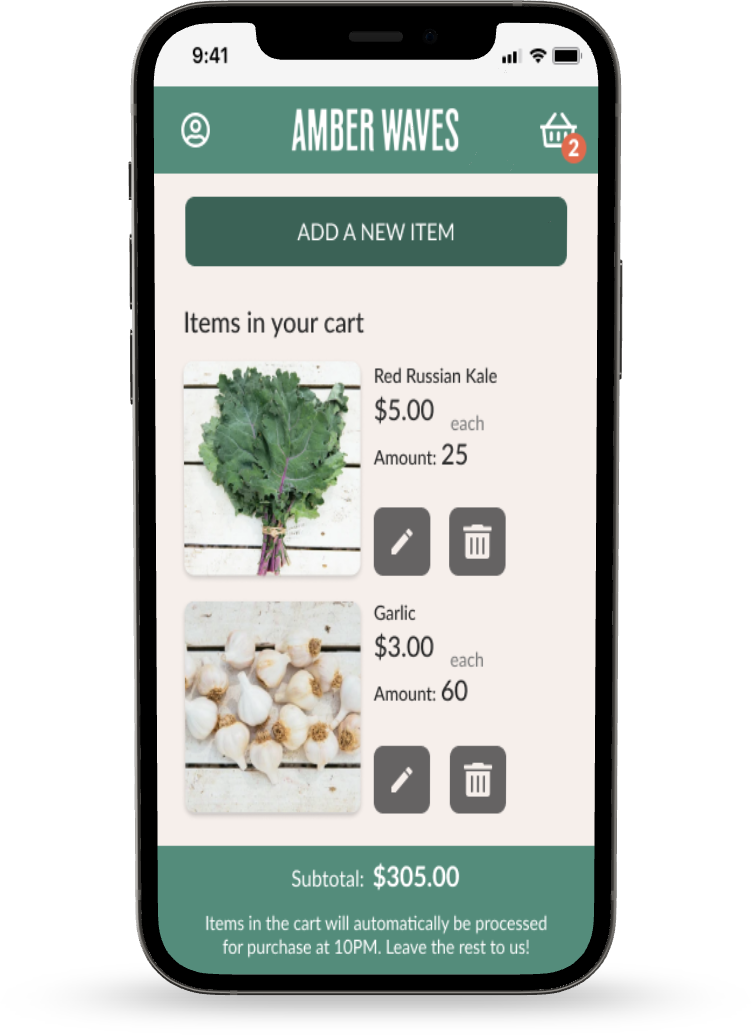
Next steps: Validating and improving the design
- Run some tests of the prototype with some users and gather feedback.
- Customer observation sessions may reveal better ways to integrate AWF ordering processes with chefs' daily routines while they manage their kitchens.
- Even though users are used to typing text messages to detail specific requests, how can we improve this experience making it quicker for them to list these details and more efficient for the AWF wholesale manager to process them?
- Discuss the feasability of this proposal with AWF website developer and make adjustments as necessary.
Metrics
Additionally, if the design gets implemented, it'd be helpful to measure user adoption and retention rates, as well as how efficient the new ordering process is.
- How many new customers are making orders on the website?
- Which pages are "choke points", making users give up on their purchase?
- How often are customers making orders on the website after each day?
- How often do users use the items shown in the "previously ordered" list to add new items to their cart?
- How often are users still sending texts and e-mails to AWF regarding orders after the redesign?
- How much income is the website generating after adopting the new design?






